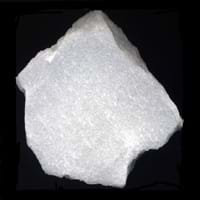Definition
Marl is an unconsolidated sedimentary rock consisting of clay and lime
Marble is a non-foliated metamorphic rock which is composed of recrystallized carbonate which is formed when limestone is exposed to high temperatures and pressures over a long time
Discoverer
Unknown
Unknown
Etymology
From Old French marle, from Late Latin marglia
From the Greek marmaros, shining stone and also from the English word marmoreal meaning marble-like
Class
Sedimentary Rocks
Metamorphic Rocks
Sub-Class
Durable Rock, Soft Rock
Durable Rock, Medium Hardness Rock
Group
Not Applicable
Not Applicable
Other Categories
Fine Grained Rock, Opaque Rock
Medium Grained Rock, Opaque Rock
Color
Beige, Brown, Green, Grey, White
Black, Blue, Brown, Grey, Pink, White
Durability
Durable
Durable
Appearance
Rough and Dull
Veined and Shiny
Interior Uses
Decorative Aggregates, Floor Tiles
Bathrooms, Countertops, Decorative Aggregates, Entryways, Floor Tiles, Homes, Hotels, Interior Decoration, Kitchens, Stair Treads
Exterior Uses
As Building Stone, Roof Tiles
As Building Stone, As Facing Stone, Garden Decoration, Office Buildings, Paving Stone
Other Architectural Uses
Curbing
Not Yet Used
Construction Industry
Cement Manufacture, Construction Aggregate, for Road Aggregate, Making natural cement, Raw material for the manufacture of mortar
As Dimension Stone
Medical Industry
Not Yet Used
Not Yet Used
Antiquity Uses
Artifacts, Jewellery, Sculpture, Small Figurines
Artifacts, Jewellery, Monuments, Sculpture, Small Figurines
Commercial Uses
Creating Artwork, Soil Conditioner
Cemetery Markers, Commemorative Tablets, Creating Artwork, Curling, Laboratory bench tops, Paper Industry, Tombstones, Used in aquariums, Whiting material in toothpaste, paint and paper
Types
Clay Marl ,Blue Marl, Red Marl, High Bank Marl, Shell Layer Marl, Under Shell Layer Marl, Sand Marl, Green Marl, Grey Marl and Clayey Marl
Breccia Marble, Carrara Marble, Calacatta marble, Cultured Marble, Polished Marble, Honed Marble, Sand Marble
Features
Generally rough to touch, Is one of the oldest rock, Splintery, Very fine grained rock
Available in Lots of Colors and Patterns, Easily splits into thin plates, Generally rough to touch, Is one of the oldest rock
Archaeological Significance
Monuments
Not Yet Used
Used
Famous Monuments
Not Applicable
Al Aqsa Mosque in Jerusalem, Buland Darwaza in Agra, India, Capitol Hill Building, Washington DC, Charminar in Hyderabad, India, Chhatrapati Shivaji Terminus in Maharashtra, India, Ephesus in Turkey, Faisal Mosque in Islamabad, Pakistan, Humayun's Tomb in Delhi, India, Jama Masjid in Delhi, India, Lotus Temple in New Delhi, India, Louvre in Paris, France, Mysore Palace in Karnataka, India, Neuschwanstein in Bavaria, Palace of Parliament in Bucharest, Romania, Parthenon in Greece, Potala Palace in Lahasa, Tibet, Prophet’s Mosque in Medina, Qutb Minar in India, Saint Basil's Cathedral in Moscow, Russia, St. Peter’s Cathedral in Vatican City, Taj Mahal in Agra, India, Tower of Pisa, Italy, Victoria Memorial in Kolkata, India, Washington Monument, US
Famous Sculptures
Data Not Available
Ajanta Caves in Maharashtra, India, Bust of Artemis, Elephanta Caves in Maharashtra, India, Lincoln Memorial in America
Formation
Marl forms when very fine-grained clay particles are deposited in water which settles at the bottom of water bodies and are compacted by overlying sediment; the water squeezes out and hence forming Marl rock.
Marble is a metamorphic rock produced from limestone in the earth crust. It is formed by the metamorphism of limestone.
Mineral Content
Calcite, Clay, Dolomite, Gypsum, Micas, Pyrite, Quartz
Garnet, Graphite, Olivine, Pyrite, Quartz
Compound Content
Aluminium Oxide, NaCl, CaO, Iron(III) Oxide, Silicon Dioxide
CaO, Iron(III) Oxide, FeO, MgO, Silicon Dioxide
Types of Metamorphism
Not Applicable
Impact Metamorphism
Types of Weathering
Biological Weathering, Chemical Weathering
Biological Weathering, Chemical Weathering, Mechanical Weathering
Types of Erosion
Chemical Erosion, Coastal Erosion, Water Erosion, Wind Erosion
Chemical Erosion, Coastal Erosion
Grain Size
Very fine-grained
Medium Grained
Fracture
Conchoidal
Not Available
Porosity
Highly Porous
Less Porous
Luster
Dull
Dull to Pearly to Subvitreous
Compressive Strength
Not Available
Cleavage
Not Available
Perfect
Toughness
2.6
Not Available
Specific Gravity
2.2-2.8
2.86-2.87
Transparency
Opaque
Opaque
Density
2.4-2.8 g/cm3
2.4-2.7 g/cm3
Specific Heat Capacity
Not Available
Resistance
Heat Resistant, Impact Resistant
Heat Resistant
Deposits in Eastern Continents
Asia
India, Pakistan, Russia
China, India
Africa
Ethiopia, Kenya, Morocco, South Africa
Namibia
Europe
Austria, France, Germany, Greece, Italy, Romania, Scotland, Spain, Switzerland
Italy, Spain
Others
Not Yet Found
Not Yet Found
Deposits in Western Continents
North America
USA
Not Yet Found
South America
Colombia, Ecuador, Peru
Not Yet Found
Deposits in Oceania Continent
Australia
New South Wales, Victoria, Western Australia
New South Wales, New Zealand, Queensland, Victoria










